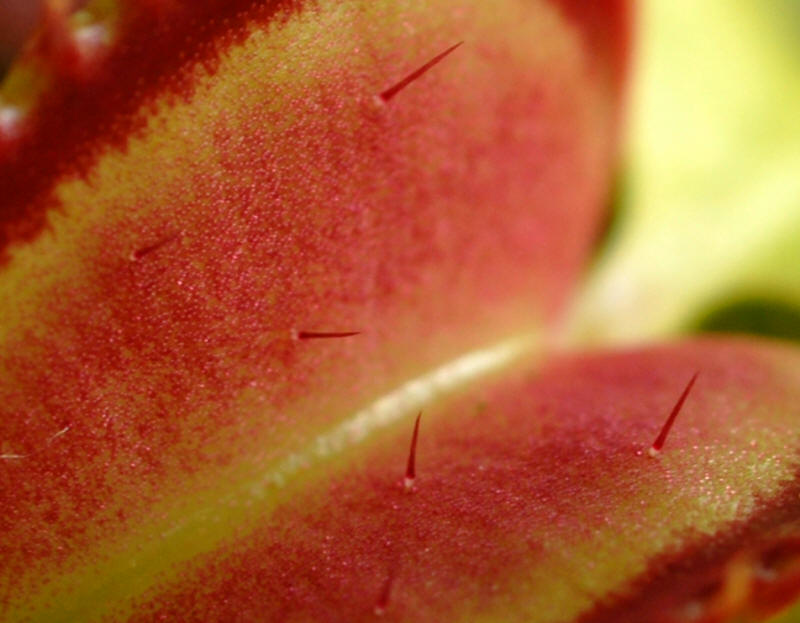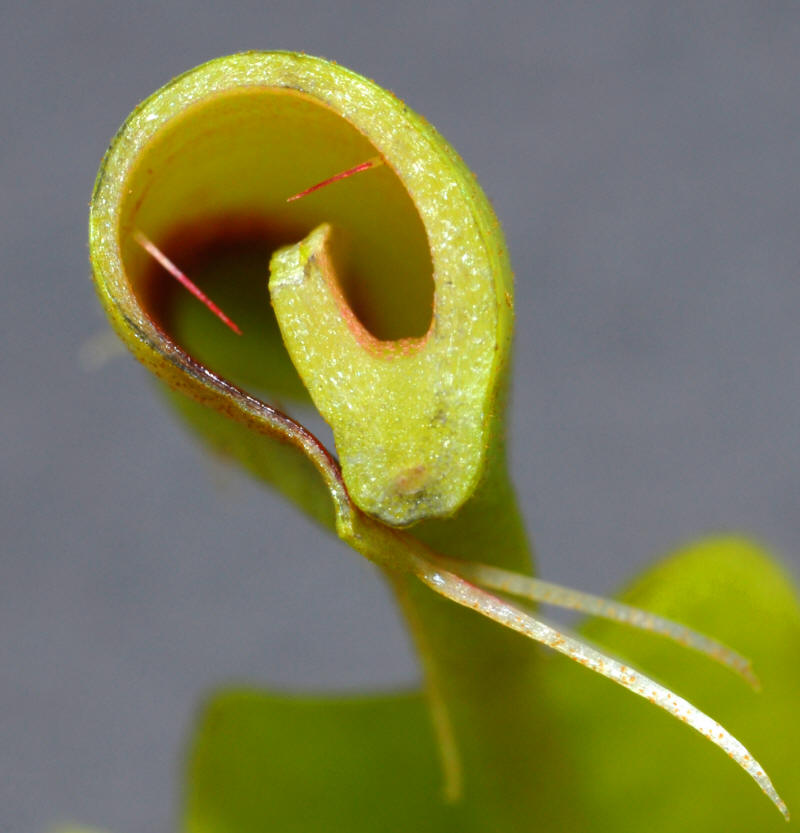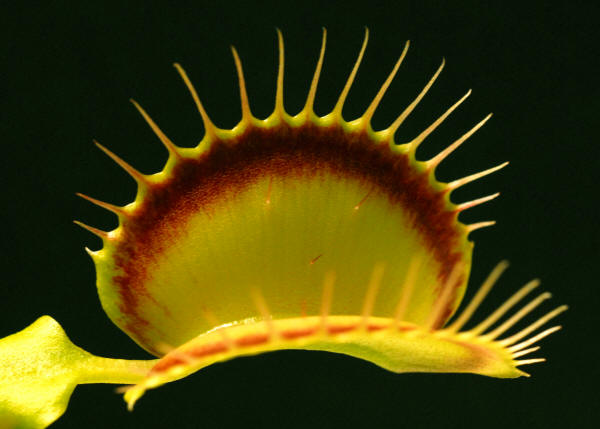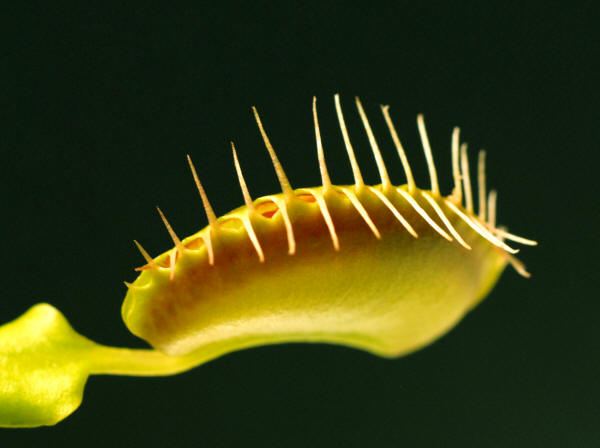Carnivorous Plants:
|
Classification
Phylogeny World Map Illustrations References |
| CP Book Library |
| CP Web Links |
The Venus Flytrap Revisited
2007-April-24 / Updated 2007-04-25
PHOTO:
Dionaea muscipula

Trap Closure Mechanism
Many studies have been conducted to better understand the
closing mechanism of the Venus flytrap. To this day many unanswered questions
remain.
Trigger Hair Structure
The trigger hair has
sensory cells embedded at an
indentation near its base, where bending
strains are most pronounced when the hair is
disturbed.
The sensory cells
contain a large amount of calcium (Ca+) and potassium (K+) ions.
Action Potential
Studies suggest strong
correlation between calcium ions and the action potential. When a
trigger hair is stimulated, the cytoplasmic concentration of Ca+ increases. These sensory cells generate an action potential upon
stimulation.
Lobe Expansion
Exactly what happens in the trap at the time of triggering is not well understood. The entire
lobe interior (mesophyll between the epidermis) seems to expand rapidly.
Only the lower (abaxial) epidermis walls become "loose" (extensible) and
get stretched. The lobe expansion occurs in the direction perpendicular
to the midrib. This creates pressure for the lobes to warp inward.
Strain Buildup
When the trap is open, the lobe surface is slightly convex (as seen from
above) - both in the direction perpendicular to the midrib and parallel
to it. Because of this initial 3-dimensional curvature of the lobe surface, the
pressure of the lobe expansion does not immediately produce a bending
motion of the lobes, and the trap remains open. The strain from the
expansion continues to build in the lobes. The lobes resist this buildup
of the mechanical tension.
Sudden Flip
Then, suddenly, the lobes
yield to the pressure and flip, precipitating a sudden change of
curvature from convex to concave. This results in a swift
closing motion of the two lobes. This flipping forces moderate expansion
of the outer lobe surfaces (abaxial surface) in the direction parallel
to the midrib. This stretching parallel to the midrib is not due to the
lobe expansion (which occurs only in the direction perpendicular to the
midrib).
Narrowing Phase
The lobe expansion, with only the lower
epidermis extension,
continues into the narrowing phase, exerting the pressure to close the
two lobes more tightly. The pressure is so strong that if one
lobe is removed from the trap, the remaining lobe curls more than 180
degrees. (See picture below.)
What Triggers Lobe
Expansion and When
It is unclear what precipitates
this lobe expansion. Is it a concentration of Ca+ ions itself (that
causes an action potential) or the accumulation of some other chemical
substance that serves as a memory until the threshold level is reached?
A related question is when this build-up of the pressure starts: Right
at the point of the first stimulation, or only after the second
stimulation is received. The former suggests that the strain in the
lobes itself serves as a memory that delays the closure until the lobes
cannot endure additional strain anymore as a result of the second
stimulation. This scenario is unlikely, because even a trap whose lobes
are not fully convex waits for the second stimulus before inducing the motion.
Reopening
The reopening
phase proceeds slowly, taking
a day. Unlike the rapid closing phase, it is due to cell growth.
The growth rate of
an activated leaf is faster than an undisturbed trap and a reopened lobe
has been
measured to be several percent
larger than the original size.
PHOTO: Dionaea muscipula

PHOTO: Dionaea muscipula

PHOTO: Dionaea muscipula
The change of the lobe surface curvature is clearly seen --- from "convex" to "concave" as seen from the trap inside.


| Carnivorous Plants Photography Web Site: Copyright © 2001-2018 Makoto Honda. All Rights Reserved. |